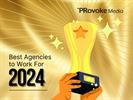Paul Holmes 25 Aug 2002 // 11:00PM GMT
May 2001 was the 40th anniversary of a major milestone in the American Civil Rights Movement, The Freedom Rides. Greyhound Lines, Inc. CEO, Craig Lentzsch, and Congressman John Lewis (D), Atlanta, GA saw this anniversary as a unique opportunity to instill pride, passion and reflection in Americans about this important civil rights milestone. In March 2001, they agreed that Greyhound would organize a commemorative celebration and Cong. Lewis, a former Freedom Rider, would be an honored guest. Greyhound had three months to fund and execute seven events in five cities across three states. A positive public perception was not guaranteed. The events of May 1961 were an unpleasant moment in American history and Greyhound’s historic involvement could have had a negative connotation. Greyhound accepted both challenges because leadership believed it was the right thing to do.
Audience Analysis:
This event offered unique opportunities for each potential audience:
Planning/Research/Objectives:
For this project, research primarily focused on two areas:
A team was assembled under the leadership of the Vice President of Corporate Communications at Greyhound. Membership included Burson-Marsteller, the company’s PR agency of record, staff from Congressman John Lewis’ office and Greyhound employees. Weekly conference calls kept the team up to date on progress. Two advance trips were made along the route of the ride.
The objective of this program was to remind Americans of the barriers broken down in 1961, but that the journey is not complete; to make “real” news through having more than just another dinner; to honor and involve all Freedom Riders; offer an interactive, educational effort for students and media; and turn an ugly moment in history into something that would positively impact the reputation of Greyhound.
Strategy:
A non-profit entity called “The 40th Anniversary Freedom Rides Trust” was formed and an IRS 501© 3 designation was secured. The trust raised funds to partially offset the cost of the event. Sponsors included the City of Birmingham, Anheuser-Busch, Coca-Cola, AFLAC, and the Southern Company Power. Events were planned that were:
Campaign Execution:
May 10, 2001: Washington, D.C.-based kickoff event, attended by U.S. Congress, civil rights leaders, former Freedom Riders, Bush Administration officials, local and national media. Speakers included Secretary of Transportation Norman Mineta, Justice Department Civil Rights Division, Bill Yoemans and Cong. Eleanor Holmes Norton. The event included a Chinese dinner to commemorate the Freedom Riders’ “Last Supper” – the dinner in D.C. the night before they left on the rides at a Chinese restaurant. Greyhound Lines CEO presented an award accepted on behalf of all Freedom Riders by Cong. Lewis.
May 11, 2001: A youth commemoration in Atlanta, GA at Clark Atlanta University, a historically black college. Cong. Lewis and the other Freedom Riders spoke to students from grade six to college. An opportunity for media interaction took place prior to the event. This event was followed by a luncheon for the Freedom Riders and Atlanta-based dignitaries and civil rights leaders at the Atlanta Civic Center that featured an opportunity for the Congressman and the other riders to share memories.
May 12, 2001: Freedom Riders, key media representatives, sponsors and dignitaries joined Greyhound and Cong. Lewis for a day-long bus ride retracing the route the Freedom Riders took in 1961 from Atlanta, through Anniston, Birmingham, and Montgomery, Alabama. The caravan of three Greyhound buses departed from Paschal’s Restaurant in Atlanta on Saturday morning.
Outside of Paschal’s, a vintage Greyhound 1954 ScenicCruiser bus was the backdrop for an early morning live broadcast with Cong. Lewis on the Today Show and other TV and print interviews. The CBS Radio Network broadcast live from the buses and live phone interviews with the riders were done from the bus by CNN at the top of every hour and by NPR from one of the stops. As the buses traveled through the cities, commemorative events were held in each location. Local media greeted the buses upon their arrival. Mayors and other local political figures were included in each event along with the general public and Greyhound’s customers and employees. In Anniston, the venue was the Greyhound Terminal. In Birmingham, the group first stopped at the historic Greyhound Terminal then moved to the Civil Rights Institute. In Montgomery, riders were welcomed by the congregation of the First Baptist Church, another historically significant location.
Summary of Results:
The team raised almost $100,000 for the Trust in less than one month, national media coverage was extensive, and the impact of the event on the participants was emotional and powerful. Critical success factors for this event include:
Audience Analysis:
This event offered unique opportunities for each potential audience:
- Freedom Riders: provide a non-exploitative event to honor their heroic acts and allow them to pass on valuable oral history as eyewitnesses to historic change.
- Media: allow a rich, unusual experience to capture history.
- Students: offer a memorable, educational opportunity to meet and interact with American heroes.
- Greyhound employees: instill pride in the company.
- General public: heighten awareness and the reputation of Greyhound and provide Congressman Lewis visibility with his constituents.
Planning/Research/Objectives:
For this project, research primarily focused on two areas:
- The historic events and the roles played by original Freedom riders and the company. This was primarily accomplished through interviews with participants on the ride, including both Freedom Riders and Greyhound employees who were working at the company at the time of the event.
- Locating and involving Freedom Riders. Congressman Lewis and his office provided a resource to begin networking among the civil rights community to accomplish this important task. Seventeen original riders were ultimately located.
A team was assembled under the leadership of the Vice President of Corporate Communications at Greyhound. Membership included Burson-Marsteller, the company’s PR agency of record, staff from Congressman John Lewis’ office and Greyhound employees. Weekly conference calls kept the team up to date on progress. Two advance trips were made along the route of the ride.
The objective of this program was to remind Americans of the barriers broken down in 1961, but that the journey is not complete; to make “real” news through having more than just another dinner; to honor and involve all Freedom Riders; offer an interactive, educational effort for students and media; and turn an ugly moment in history into something that would positively impact the reputation of Greyhound.
Strategy:
A non-profit entity called “The 40th Anniversary Freedom Rides Trust” was formed and an IRS 501© 3 designation was secured. The trust raised funds to partially offset the cost of the event. Sponsors included the City of Birmingham, Anheuser-Busch, Coca-Cola, AFLAC, and the Southern Company Power. Events were planned that were:
- Meaningful and non-exploitative to the Freedom Riders
- Educational for students in the Congressman’s home district
- Inclusive of all members of Congress to ensure wide recognition of the milestone
- Open to the media and provided them face-to-face opportunities to capture important oral history
- Located in meaningful, historical venues, including Greyhound facilities where possible
- Cooperative with host cities including their mayors and city leadership.
- The execution strategy involved a network of Greyhound and Burson-Marsteller employees in the key event cities that would execute the detailed logistics.
Campaign Execution:
May 10, 2001: Washington, D.C.-based kickoff event, attended by U.S. Congress, civil rights leaders, former Freedom Riders, Bush Administration officials, local and national media. Speakers included Secretary of Transportation Norman Mineta, Justice Department Civil Rights Division, Bill Yoemans and Cong. Eleanor Holmes Norton. The event included a Chinese dinner to commemorate the Freedom Riders’ “Last Supper” – the dinner in D.C. the night before they left on the rides at a Chinese restaurant. Greyhound Lines CEO presented an award accepted on behalf of all Freedom Riders by Cong. Lewis.
May 11, 2001: A youth commemoration in Atlanta, GA at Clark Atlanta University, a historically black college. Cong. Lewis and the other Freedom Riders spoke to students from grade six to college. An opportunity for media interaction took place prior to the event. This event was followed by a luncheon for the Freedom Riders and Atlanta-based dignitaries and civil rights leaders at the Atlanta Civic Center that featured an opportunity for the Congressman and the other riders to share memories.
May 12, 2001: Freedom Riders, key media representatives, sponsors and dignitaries joined Greyhound and Cong. Lewis for a day-long bus ride retracing the route the Freedom Riders took in 1961 from Atlanta, through Anniston, Birmingham, and Montgomery, Alabama. The caravan of three Greyhound buses departed from Paschal’s Restaurant in Atlanta on Saturday morning.
Outside of Paschal’s, a vintage Greyhound 1954 ScenicCruiser bus was the backdrop for an early morning live broadcast with Cong. Lewis on the Today Show and other TV and print interviews. The CBS Radio Network broadcast live from the buses and live phone interviews with the riders were done from the bus by CNN at the top of every hour and by NPR from one of the stops. As the buses traveled through the cities, commemorative events were held in each location. Local media greeted the buses upon their arrival. Mayors and other local political figures were included in each event along with the general public and Greyhound’s customers and employees. In Anniston, the venue was the Greyhound Terminal. In Birmingham, the group first stopped at the historic Greyhound Terminal then moved to the Civil Rights Institute. In Montgomery, riders were welcomed by the congregation of the First Baptist Church, another historically significant location.
Summary of Results:
The team raised almost $100,000 for the Trust in less than one month, national media coverage was extensive, and the impact of the event on the participants was emotional and powerful. Critical success factors for this event include:
- The decision of the Greyhound CEO to do the right thing in the face of a potential downside. The event avoided negative associations because it did not attempt to gloss over the truth and it celebrated rather than recreated.
- It was a life-changing event for many involved and was filled with poignant moments. Freedom Riders returned to the site of the original events for the first time in 40 years. One Freedom Rider, who was brutally beaten and hospitalized, met the man who took him to the hospital for the first time at the event in Montgomery.
- Managing so many events from Greyhound’s Dallas, TX headquarters required leveraging Greyhound employees and Burson Marsteller in other cities. Greyhound has a core competency in managing complex operations on a daily basis and brought these operations skills to bear on this event. The Greyhound telephone operation center managed a complex RSVP process including Congressional invitees.
- Greyhound and Burson Marsteller aggressively and thoroughly pitched and pre-briefed media, clarifying the historical significance, which is not widely understood or remembered 40 years after the fact.
- Finding and including Greyhound employees who were involved in the historical events and including them in celebratory events and media interviews.


































.jpg)

















